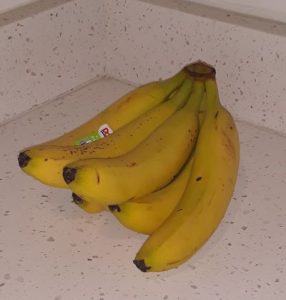1
More than anything, geography is about spatial relationships and utilizing a spatial perspective to view and understand the world. This is in contrast with looking at the world with a chronological perspective, where time, instead of place, is the primary unit of analysis.
In human geography, the connections of most interest are between people and places, and the mode of connection is as important as the connection itself. The goal of this text is to make sense of these connections.
Geographers seek to answer:
What is Where, Why There, and Why Care?*
*Charles F. Gritzner, “What Is Where, Why There, and Why Care?,” Journal of Geography, 101, no. 1 (January/February 2002), pp. 38–40.
These questions underscore the importance of the WHERE in geographical thought and research. Geographers must rely on a spatial perspective to produce knowledge that answers these questions. This means that they have a heavy eye towards how the geographical context of whatever phenomenon they are exploring helps to explain the presence, character, and meaning of the phenomenon. Another way to articulate this is that geographers seek to understand what processes (natural, political, economic, socio-cultural) help explain various patterns (natural, political, economic, socio-cultural) on the landscape and across space.
In answering these questions, geographers produce knowledge about the spatial distribution of various natural and socio-cultural phenomena. For example: how the percent of people living in urban vs. rural areas, number of adherents to particular religions, karst topography, governance structure, and access to K-12 education, to name a few, are distributed across space.
Why do we care? Aside from better understanding the world in which we occupy, assessing the spatial distribution of various phenomena reveals unevenness in the world which has implications both for how we as individuals live our lives and for how countries make policies and distribute resources. For instance, knowing that children, in particular, girls, in periphery countries have on average less access to K-12 schooling in comparison to children in core countries, has implications for local policy-makers and international organizations.
We may not think about it often, but we are parts of a large network or system of production and exchange. This system works across multiple scales:
- Interpersonal
- Local
- Regional
- National
- Global
Humans and their activities are shaped by many changing processes:
- Natural
- Political
- Economic
- Socio-cultural
As well, various power structures affect humans and human activities:
- Government institutions
- Financial systems
- Religious hierarchies
- Discrimination
- Colonialism
- … and more
All these systems and processes overlap and affect individuals and communities of people in different ways. Human geographers are interested in studying the convergence of these that occur in specific places. The specific way that these systems and processes intersect are one thing that gives a place its local distinctiveness or character, as differentiated from other places.
Before we get into depth about the many fields of human geography, we will begin by investigating a banal concept and seeing just how complex the spatio-cultural relationships are. Let’s talk about breakfast and how we see interdependence occurring with a couple common breakfast items.
Bananas
Have you ever wondered why bananas are so cheap in the United States, while native/domestic fruit grown locally is more expensive? Bananas are not native to the United States and are generally not grown domestically. Instead, bananas come from thousands of miles away, and often need to be shipped by sea. In addition, bananas must be kept cool, and only keep for about two weeks after they are harvested. Compare this to a common apple; though not native to the United States, apples are widely cultivated. Apples can be grown locally, cutting down on shipping costs, and can be kept for months. Yet, apples can be 2 to 4 times as expensive as bananas.

A number of things have been put in place over time in order for bananas to be cheaply available in the United States. First, we essentially only see one species of banana, the cavendish. By limiting the number of species or cultivars available, an economy of scale is produced, where cost savings come through the creation of more of a product. Second, transportation technology improved to make the transport of bananas from Central America and the Caribbean cost effective. While not native to the Americas, bananas can thrive in plantations through the tropical regions of the Americas. Bananas became popular in the United States when the United Fruit Company (now Chiquita) figured out how to quickly and coolly get bananas to the United States, through trains and ships outfitted with refrigeration units.
Still, most banana production, even in the large plantations which became widely established during the European colonization of the Americas, is done by hand. Bananas are delicate, and most are hand cut and hand packed. This means, in order to have a cheap banana, there must be cheap labor. The ability of fruit companies to control labor costs in foreign lands is the source of the term banana republic. This refers to a country where large-scale exploitative plantation agriculture is supported by the ruling class in exchange for kickbacks. In other words, the rulers of a less developed country are financially supported by fruit companies located in a more developed country, and those rulers use local power (and often, tacit military support from more developed countries) to keep those working on the fruit plantations from demanding higher wages. Another broader name for this type of government is a kleptocracy: rule by thieves. US fruit companies, with help from the US military, maintained this cooperative stance for many years within Central America, the Caribbean, and South America.
Of course, systems and cultures change over time. As recent as 2011, workers for Dole in Costa Rica are paid about 46% above the then national minimum wage of $10.31 a day, implying somewhat improved pay. However, there are still issues involving workers rights and environmental degradation in banana plantations. For a visualization of Dole bananas, visit this Story Map called The Truth behind the Dole Banana.
Corn Flakes
Perhaps you’ve seen the classic commercials of breakfast cereals, showing a bowl of cereal surrounded by various other breakfast foods and drinks, with a narrator explaining it as “part of this balanced breakfast.” Yes, it’s a way to try to sell as healthy some of the multitudes of sugary breakfast cereals. But ready-to-eat cold cereals, from which we now have these sugary concoctions, were started as a healthy alternative to the heavy breakfasts of the 19th century. Part of this balanced breakfast, indeed!

Corn Flakes were invented in Battle Creek, Michigan, developed by the brothers Kellogg (John Harvey and Will Keith). John Harvey Kellogg was a trained doctor. He was raised and lived within the Seventh-day Adventist faith, a Protestant Christian denomination that came into existence in the mid-1800s. Battle Creek was both the headquarters of the Adventist church and the location of the Western Health Reform Institute (later the Battle Creek Sanitarium). John Harvey Kellogg was the head of this Adventist health center. The Sanitarium was run with the health and dietary laws of Adventists in mind; in terms of diet, this meant temperance against tobacco, alcohol, meats, caffeine, spices, and sweets.
The brothers Kellogg experimented with creating vegetarian food products using various grains. Through a happy accident, they developed a method of making flakes of grain that could then be toasted. Patients at the Sanitarium enjoyed the flakes, which were originally named “Granose”. These flakes were marketed and sold as health food items, creating many imitators (despite the Kellogg’s holding patents). Will Keith Kellogg saw that there could be bigger commercial growth in the product, bought John Harvey out of the patent, and opened the Kellogg Company, which is still known to this day. In mass marketing, Will Keith added sugar to the recipe, helping create a break in the relationship between the two brothers. We can see here that a spatial intersection of religion and health played a formative role in actually shaping Corn Flakes themselves, as certain ingredients were both chosen and avoided by the Kellogg brothers. This invention occurred in Battle Creek due to specific, overlapping geographic distributions of human culture.
Now, Kellogg’s is a huge international company operating within the increasingly interconnected globalized economy, developing and selling products for all kinds of cultures and beliefs. Will Keith Kellogg’s signature still serves as a company logo, but beyond that, the cultural history of the product isn’t seen on the box. Instead of religion and dietary laws, the box shows a cartoon mascot Cornelius Rooster.
Can you see how utilizing a spatial perspective transforms the way you look at common objects on your kitchen counter? Let’s test that..
Your turn
Think about what you had for breakfast today or what you’ve recently had for breakfast. Think about the activities, structures, and processes involved in you eating your breakfast. Use the following questions as a guide:
Questions
Do not feel obligated to answer all these questions, but use them as a guide (to the best of your ability and knowledge) to think about the processes and systems involved in you eating your breakfast.
- What did you eat for breakfast?
- Did you make your breakfast at home or buy at a restaurant/take out establishment?
- Was your breakfast culturally or regionally specific? In other words, are Corn Flakes, scones, breakfast burritos, lattes, pop tarts, etc. consumed everywhere?
- Is the type of food you eat affected by economic and political processes, or is your choice of food simply based on “taste”?
- Where did the ingredients in your breakfast come from? Where was it produced and by whom? (Developed vs. developing world? Factory vs farm?)
- What are the different networks and activities that must be in place before you can eat breakfast?
- Who financed your breakfast (from the earliest stages of food production to the last moments of consumption or waste)?
- Does it matter what places your food comes from and what social conditions (like the working conditions of farmers, etc) it was produced under? Why or why not?
- Is it important – or possible – to consume locally?
Media Attributions
- bananas2
- cornflakes2
relating to space
point of view oriented around space, place, and spatial dimensions
branch of geography
actions, events
arrangements
how things are distributed across space
type of landscape formed by soluble rocks dissolving and eroding
least developed parts of the world
most developed parts of the world
particular area
connection between cultural influences and specific spaces
producing larger quantities to save costs
process of acquiring control over a people and/or place
a country where large-scale exploitative plantation agriculture is supported by the ruling class in exchange for kickbacks
country with comparatively higher levels of economic prosperity and quality of life
rule by thieves
organized system of belief in higher power
state of well-being
interconnected
